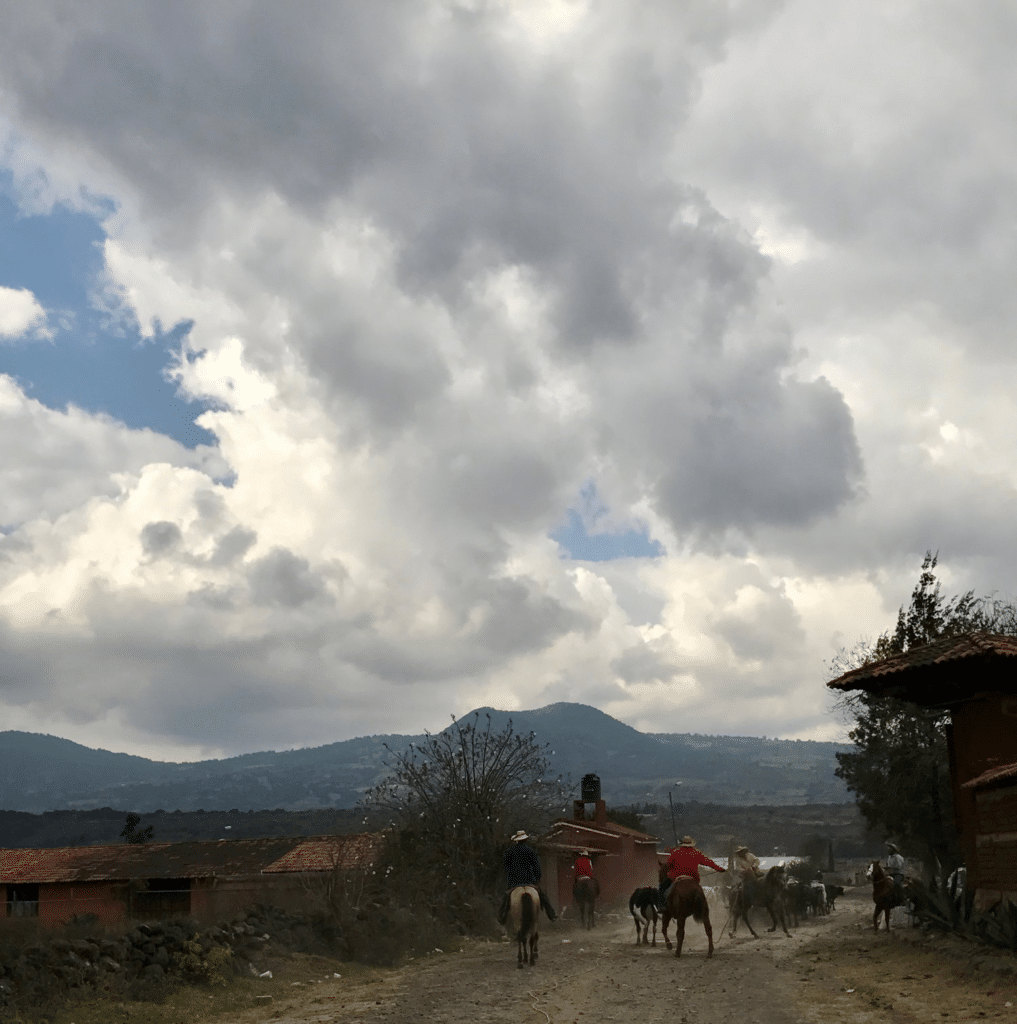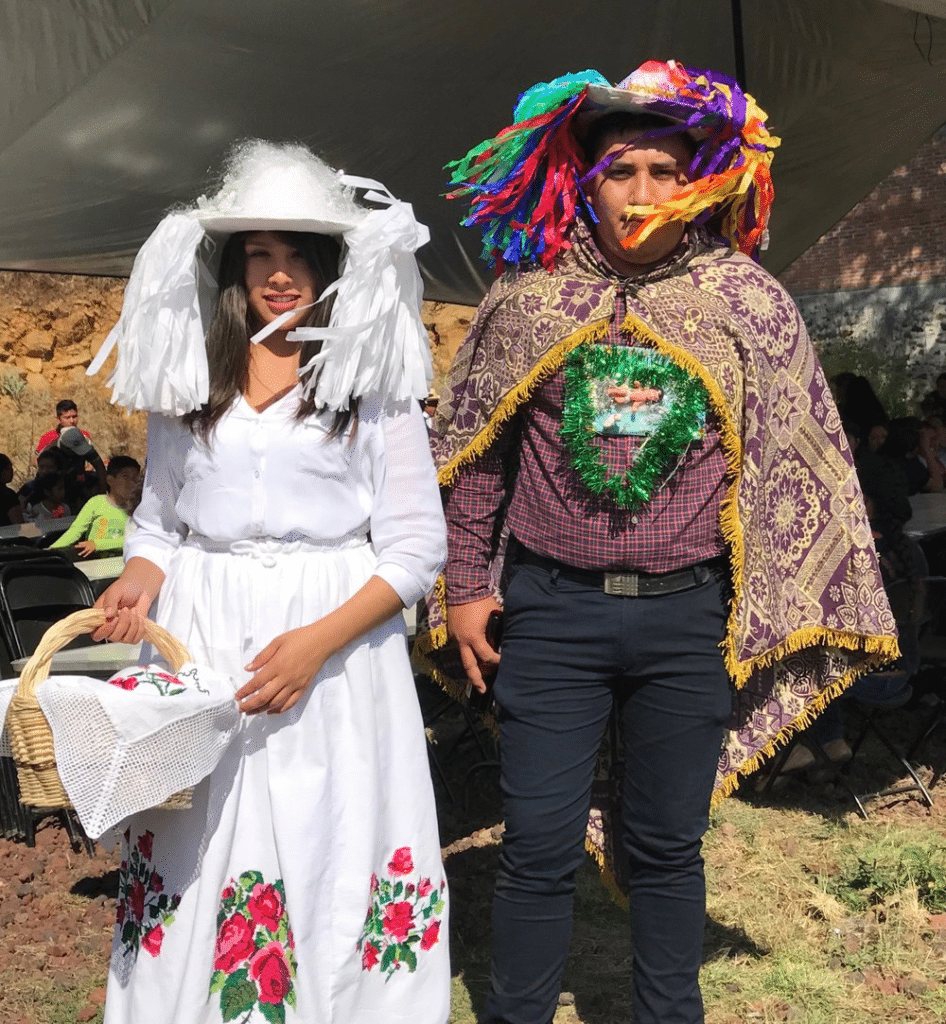I remember the feeling coming up to the holidays. We wanted to go somewhere where we could really feel Christmas. Not the shopping and decorations, but the warmth. We were craving a heart-felt counterpoint to nearly everything in the media, a softness in people’s eyes, and a gentleness of gesture.
We picked a small, lesser-known town in the State of Michoacán, Mexico. It was more of a leap than a well-planned trip. Here’s why Michoacán, a patchwork of colonial towns and lakes in western Mexico, is the perfect place to escape into Christmas, or any other day of the year.


The Pace of Sunday (and Horseback)
We arrived in Pátzcuaro on a Sunday around midday. The first impression is that of a small, dusty town of cobblestones and street vendors (which was a sign that we had picked well). Sitting in a café under the 16th century arches of the main square, we watched as it revealed itself…balconies overspilling with flowers, plates of tamales filled with fish, and red pozole being passed, ranchers coming through town on horseback. Pátzcuaro has the feel of being somewhere back in time. Its original name “Tzacapu-ansucutinpatzcuaro” translates as “door to heaven” or “place where the blackness turns to light.”


Celebrations to be Walked Into
Christmas is the time of Pastorelas in Mexico (a lively singing form of storytelling, of pastoral origin, often played out in street parades). After being told that it would be impossible to know in advance where to find one (they were way too local and spontaneous), we put it on our internal wish list and went about with other plans. Then, stepping into the town of Ihuatzio, we heard distant drums and a bustle of activity somewhere nearby. Following the sound and excitement down Calle Mexico, we walked right into a dancing procession…a man in a giant piñata mask, young girls in yellow embroidered skirts, led by a marching band. As it moved through the streets, the parade gathered more people. The spirit was light and contagious, ultimately leading us into a private home with hundreds of friends and family gathered. Our favorite party feature: a long table, lined with poinsettias and older women passing the tequila. Spontaneity welcomes you here.

Falling Under the Spell of Forty Million Monarch Butterflies
The monarch butterflies taught us that expectations are the enemy of any successful — or magical — trip. When we first heard about the butterfly sanctuaries, we were interested but also a little skeptical. They were a good two-hour drive away, and they’d have to be jammed with tourists. Why go when we could so deliciously stand still? Because you have to. There are four butterfly sanctuaries in Michoacán. We chose the Monarch Butterfly Biosphere Reserve in Ocampo. After a near-silent climb to an elevation of 11,000 feet, it all changed seemingly at once, even though it must have been subtly shifting all the way. All of a sudden there were so many butterflies around us (approximately 40 million), that you could hardly see them. Then, with time, your eyes adjust and you become in tune and entranced with them. Yes, there are tourists, but they are mostly quiet, joined in a spontaneous meditation that can’t be helped. The flutter of forty million monarch butterflies casts a spell that only nature can.
Here I am in the car with local guide (and professional bullfighter) Alejandro Vilchis. As we drive the two hours from Pátzcuaro to the Ocampo butterfly reserve, he fills us with stories, facts, and history lessons. Listen to him tell the story of the monarch butterfly migration here:

The New (Undiscovered) San Miguel
San Miguel may be the much celebrated art haven in Mexico, but Pátzcuaro is the in-the-know cultural/artisan center for Michoacán. This has been in the making since the 1500s thanks to the legendary Bishop Vasco de Quiroga who inspired and instructed indigenous crafts in the lake villages according to what was available in the environment: near the lakes, reed weavers; where the clay was good, potters; and near the forests, ceremonial mask carvers. The villages are still very active, and many artists have also made their home here. We recommend visiting the beautiful studio and sculpture garden of master artist Talleres de Juan Torres.


Sleep in the Oldest Custom House in Mexico
There are a few grand hotels in Pátzcuaro and the lake villages, but we recommend the smaller Hotel Casa de la Real Aduana, the oldest custom house in Mexico (circa 16th century), meticulously restored. We love the lush inner courtyard that smells of spices and blooming flowers, the exquisite collection of local art, and breakfast conversation around the fire with Didier, a photographer/art collector/music aficionado turned master restorer.
To get to there: There are many ways to get to Pátzcuaro, Mexico. We flew into Mexico City, and then took a short one-hour flight to Morelia, where our driver picked us up for the one-and-a-half hours to Pátzcuaro. Super easy if you have a sense of adventure.




